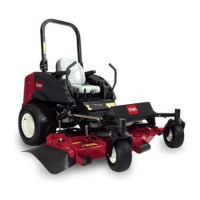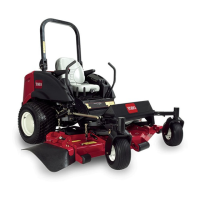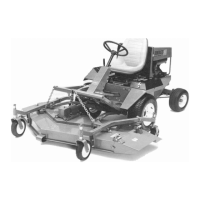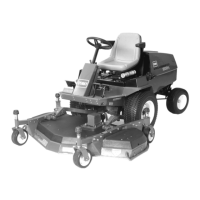Inspecting,Maintaining,andTestingtheBattery(continued)
B.Temperaturecorrecteachcellreading.Foreach5.5°C(10°F)above
26.7°C(80°F)add0.004tothespecicgravityreading.Foreach5.5°C
(10°F)below26.7°C(80°F)subtract0.004fromthespecicgravity
reading;refertotheCellSpecicGravityExample(page5–63).
CellSpecicGravityExample
CellTemperature100°F
CellSpecicGravity
1.245
37.7°Cminus26.7°Cequals11.0°C
(100°Fminus80°Fequals20°F)
11°Cmultiplyby0.004/5.5°Cequals0.008
(20°Fmultiplyby0.004/10°Fequals0.008)
ADD(conversionabove)
0.008
Correctionto26.7°C(80°F)
1.253
C.Ifthedifferencebetweenthehighestandlowestcellspecicgravityis
0.050ormoreorthelowestcellspecicgravityislessthan1.225,charge
thebattery.
D.ChargeattherateandtimegiveninChargingtheBattery(page5–65)
oruntilallcellsspecicgravityis1.225orgreaterwiththedifferencein
specicgravitybetweenthehighestandlowestcellislessthan0.050.If
youcannotmeetthesechargingconditions,replacethebattery.
3.Doahigh-dischargetestwithanadjustableloadtester.Thisis1ofthemost
reliablemeansoftestingabatteryasitsimulatesthecold-crankingtest.A
commercialbatteryloadtesterisrequiredtodothistest.
CAUTION
Followthemanufacturer'sinstructionswhenusingabatteryload
tester.
A.Checkthevoltageacrossthebatteryterminalsbeforetestingthebattery.
Ifthevoltageislessthan12.4VDC,chargethebatterybeforecontinuing
thetest.
B.Ifyouchargethebattery,applya150Aloadfor15secondstoremove
thesurfacecharge.Useabatteryloadtesterfollowingthemanufacturer's
instructions.
C.Ensurethatthebatteryterminalsarefreeofcorrosion.
D.Measuretheelectrolytetemperatureofthecentercell.
E.Connectabatteryloadtestertothebatteryterminalsfollowingthe
manufacturer'sinstructions.Connectadigitalmultimetertothebattery
terminals
F.Applyatestloadof1/2thecrankingperformanceratingofthebatteryfor
15seconds;refertoBatterySpecications(page5–61).
G.Takeatestvoltagereadingat15seconds,thenremovetheload.
Groundsmaster7210
Page5–63
ElectricalSystem:ServiceandRepairs
16222SLRevC
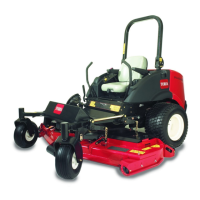
